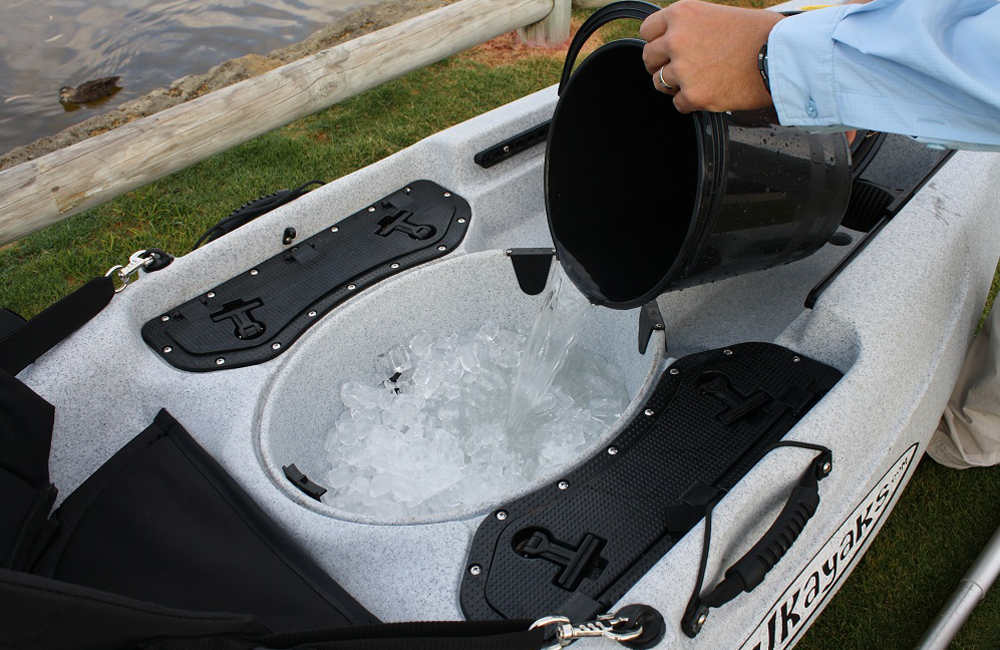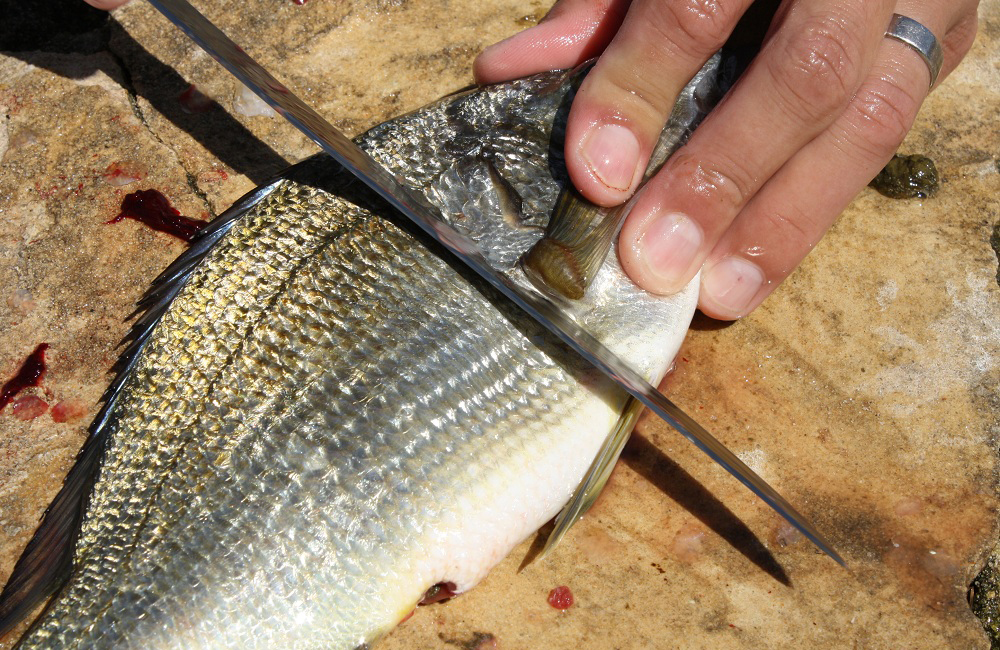When you get all that fish home, the first thing to do is to wash and dry it again, because this will be your first chance to do it properly. Paper towels are great for this job as they really pull the surface moisture out of the fish. The fish is ready to store when you can press it with a clean paper towel and not get any stain or moisture on the towel. Drop the fish pieces into a plastic bag and carefully roll the air out, then secure it with an elastic band to keep the air out.
If you think all this is excessive, try doing two lots of fish. Prepare one this way and simply place the other fish on a plate with cling wrap over the top. Give them both a couple of days in the fridge and then give both samples the nose test. Neither fish should be off by any means, but the dry fish will have very little odour at all compared with the other.
There is a second reason for going to all this trouble. Rather than just wolfing the fish down fresh, a storage period of several days allows muscles that have gone into spasm at the time of death to relax and tenderize. It would not be as noticeable to you if you cooked fresh and ‘tenderized’ fish samples, but if you try both raw you will notice a quite remarkable difference in texture.
For very short-term storage, say a day, simply dry the fish and leave them on a paper towel on a covered plate in the fridge. That will be fine. Fish needs to be handled with great care if it is to be frozen, and different approaches are advised depending on whether the fish is intended for short- or long-term freezing.
For short-term freezing, fish prepared as described above is ready for the freezer, but ensure that as much air as possible has been squeezed from the package and that it is completely sealed.
For long-term freezing, save old plastic ice cream containers and plastic take-away cartons. Put one meal of fillets in a container and then fill it to within a few centimetres of the top with ice water (the space allows for the expansion of the water as it freezes). The faster you freeze any food, the better, so if the fish is cold and the water close to freezing you are doing the job right.
If you have a considerable amount of fish and no containers, try laying the fillets out in a flat cake tin, or in a shallow layer of water in the bottom of a baking dish. Freeze the lot, turn the ice block out of the dish, wrap it in foil, then pop it in a heavy plastic bag.
When you freeze fish, make absolutely sure you mark the outside of the container with the date, number and type of fillets.
Fish will only be satisfactory if kept frozen for a maximum of six months, and it is a good idea when using domestic refrigeration to keep fish for no more than a maximum of four months. The best approach is to consume frozen fish within a month.
With tailor, a soft, oily fish with quite a high blood content, the fish improved out of sight if it was frozen or chilled for just a couple of days after having lemon squeezed all over it. This might also be worth trying with some of the skippy, which have similar flesh.
Thaw your fish with care by melting the ice off the blocks under a running tap or in a big bowl of cold water, then allowing the final defrost to take place in the fridge on a covered plate. Give yourself plenty of time with this, as a fast defrost will spoil the fish. Microwave defrosting is excellent. Thaw away the external ice in water, then follow the directions for your particular machine.
NOTES ON FREEZING FISH
As soon as the fish is frozen, remove and dip in cold water to form an ice glaze, then return to freezer. The glaze helps protect the frozen fish from drying out and developing “off-flavours”. For good quality seafood only freeze fish for 2 – 3 months
When thawing shellfish, it is best done in a refrigerator, however fish is far better cooked in its frozen state.
STORAGE
Many people underestimate the length of time seafood can be stored. If due care is taken seafood will stay fresh for several days.
Here are some simple storage guidelines to help maximise the shelf life of seafood.
Whole Fish
Scale and remove gills and gut. Wash in cold water and dry well. Wrap in foil or place in a covered container. Store in refrigerator. Fridge life is 2-3 days.
Fillets And Cutlets
Wash in cold water and dry well. Wrap in foil or place in a covered container. Store in refrigerator Fridge life is 2-3 days.
Smoked Fish
Wrap in foil or place in a covered container. Store in refrigerator. Fridge life is 7-10 days.
Shellfish
Wrap in foil or place in a covered container. Store in refrigerator. Fridge life is 2-3 days.
IMPORTANT TIPS
Plastic wrap is undesirable as it causes fish to sweat. Live mussels, oysters and cockles will die if placed in the refrigerator. They should be kept in a damp hessian bag in a cool dark place, such as the laundry. During cool weather they will stay alive for approximately 3 days. Discard any that open prior to cooking.




